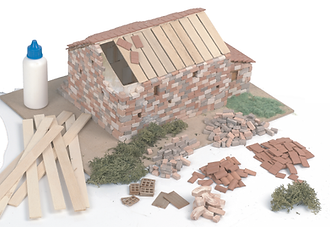top of page
Historical buildings

The kits include all the materials needed to assemble the model.
1. Ceramic pieces of different shapes and sizes.
2. Glue adhesive
3. Base structure of the building, cardboard material and with intuitive strokes.
4. Timber structure, for the construction of the roof or structural support.
5. Assembly instructions manual.

Santa Maria de Eunate
Navarra S.XII - Navarra (Spain)
Romanesque style. It is one of the funeral temples of the Way of Santiago, in which the deceased pilgrims were buried. The temple of Eunate stands out for its cover, with a rich sculptural ornamentation and by the set of columns that surrounded the temple.


12th Century
Hermitage romanesque
Romanesque architecture is a way of building within the style known as Romanesque art developed in Europe, with its own characteristics and its special evolution over more than two centuries, from the beginning of the eleventh century to well into the thirteenth century.


Hermitage romanesque
12th Century
Romanesque architecture is a way of building within the style known as Romanesque art developed in Europe, with its own characteristics and its special evolution over more than two centuries, from the beginning of the eleventh century to well into the thirteenth century.

bottom of page

















